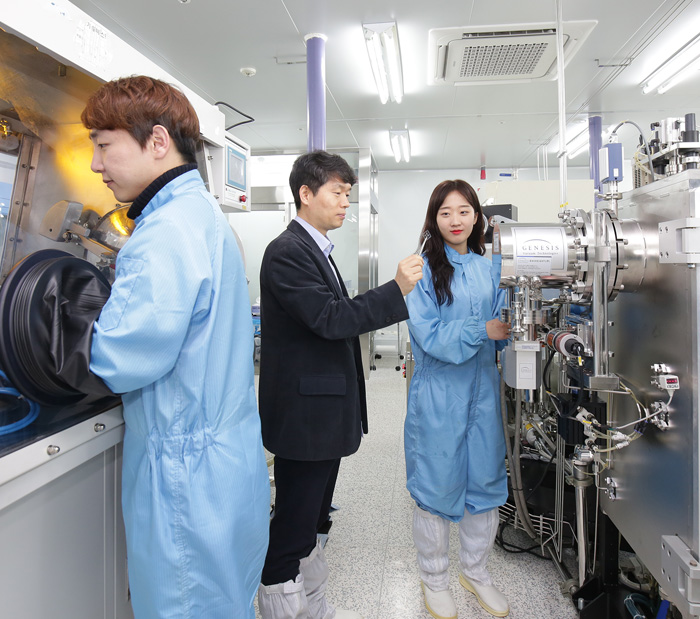Research Stories
Research on Future Display using 2D Colloid Materials
The research team reported in Nature Materials in 2014 that 2D nano colloid can be used in liquid crystal display.
Electronic and Electrical Engineering
Prof.
SONG, JANG KUN
The research team reported in Nature Materials in 2014 that 2D nano colloid can be used in liquid crystal display. In the conventional LCD devices, high electric fields over 1 V/μm is required to induce dynamic switching of liquid crystal molecules. In contrast, the team discovered that the electric field required for the switching of graphene-oxide (GO) 2D colloid was about 0.01 V/μm, which is 1/100 of that for the conventional LCDs. They also reported that the Kerr coefficient of some of 2D colloid which represents the optical sensitivity of material by electric field, is the highest among all known materials. Another advantage of the switching of 2D colloid in nematic phase is that even after tuning off the external power, the written information can be retained differently from usual LCDs. Recently, the team continued the research using another 2D materials including ZrP and TiP nano plates, and accomplished higher optical transmittance and better chemical stability. They also reported photonic crystals using 2D colloids. Photonic crystals can emit structural color without any dye or phosphor materials, and are regarded as promising materials for future display devices, solar cells, and photosensors. They have demonstrated the electrically controllable photonic crystal devices, in which the reflection color and brightness were controlled by modifying the concentration and alignment of 2D particles. Furthermore, they also revealed the mechanism that the photonic crystal alignment can be obtained in flexible 2D particle colloid, by directly showing the alignment of 2D particles in colloidal state. The relevant research results were published in high ranked journals including Nature Materials and Nature Communications.

